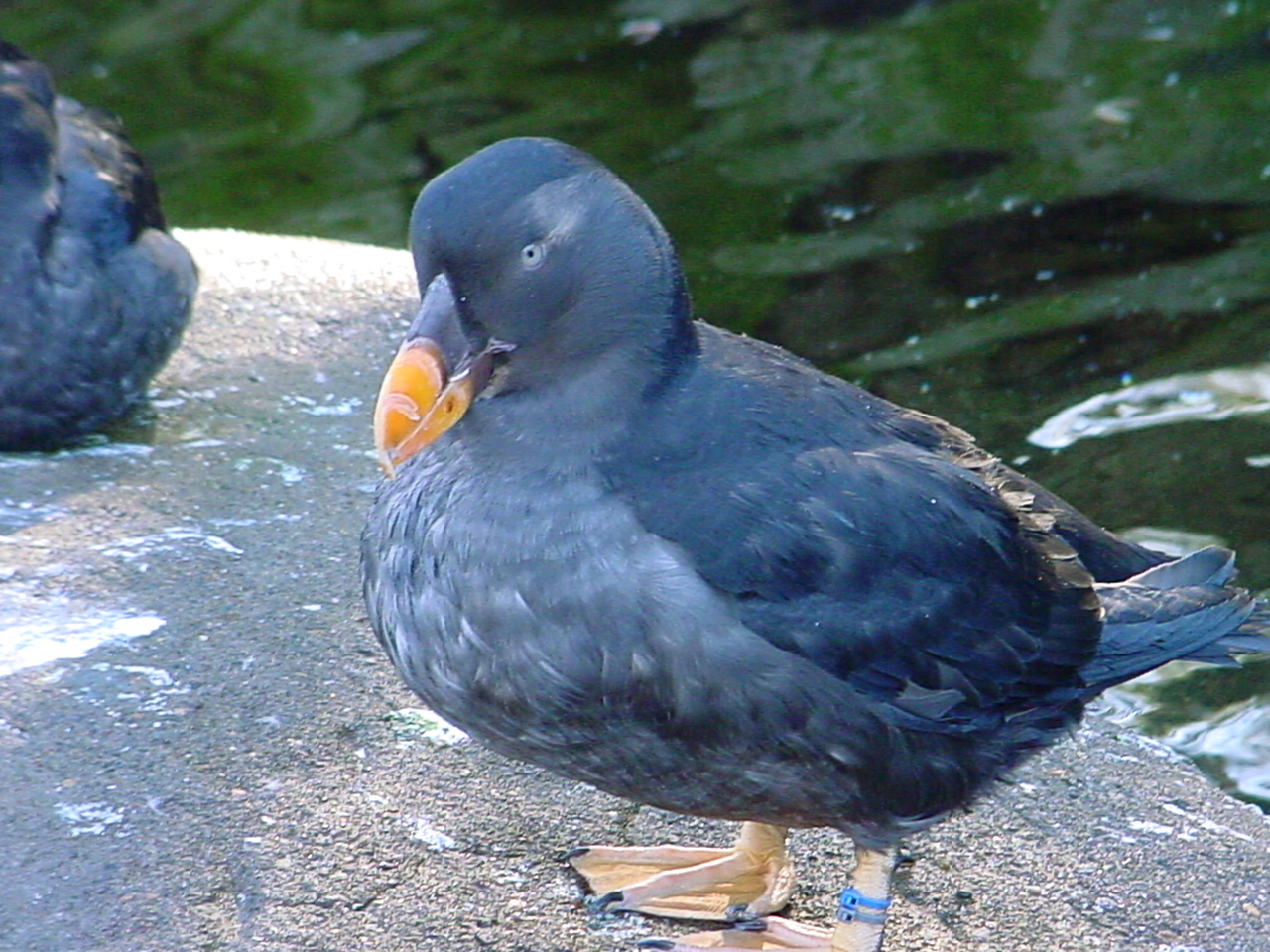|
Pacific North Coast Integrated Management Area
The Pacific North Coast Integrated Management Area (PNCIMA: pronounced pin-SEE-ma) is one of five Large Ocean Management Areas (LOMAs), areas of high ecological, social and economic importance, that have been identified by Fisheries and Oceans Canada (DFO) as priority regions for marine planning as part of Canada’s Oceans Action Plan. After years of work by conservation groups, the fishing sector, tourism outfitters, First Nations, scientists and coastal residents, the Government of Canada finally embarked on the PNCIMA marine planning process in 2010. The goal was to develop a plan to conserve this relatively undeveloped region, while fostering sustainable economies on the coast, which promised to make Canada a world leader in marine conservation. The purpose of the PNCIMA planning process is to ensure a healthy, safe, and prosperous ocean area by engaging all interested parties in the collaborative development and implementation of an integrated management plan. The goals of th ... [...More Info...] [...Related Items...] OR: [Wikipedia] [Google] [Baidu] |
Fisheries And Oceans Canada
Fisheries and Oceans Canada (DFO; french: Pêches et Océans Canada, MPO), is a department of the Government of Canada that is responsible for developing and implementing policies and programs in support of Canada's economic, ecological and scientific interests in oceans and inland waters. Its mandate includes responsibility for the conservation and sustainable use of Canada's fisheries resources while continuing to provide safe, effective and environmentally sound marine services that are responsive to the needs of Canadians in a global economy. The federal government is constitutionally mandated for conservation and protection of fisheries resources in all Canadian fisheries waters. However, the department is largely focused on the conservation and allotment of harvests of salt water fisheries on the Atlantic, Pacific and Arctic coasts of Canada. The department works toward conservation and protection of inland freshwater fisheries, such as on the Great Lakes and Lake Winni ... [...More Info...] [...Related Items...] OR: [Wikipedia] [Google] [Baidu] |
Hecate Strait
, image = HecateStrait(PittIsland).JPG , image_size = 260px , alt = , caption = Hecate Strait and Pitt Island , image_bathymetry = Loc-QCS-Hecate-Dixon.png , alt_bathymetry = , caption_bathymetry = Hecate Strait as delineated by BCGNIS, along with Queen Charlotte Sound and Dixon Entrance. Red dots indicate capes and points, gray text indicates island names. , location = British Columbia, Canada , group = , coordinates = , type = , etymology = , part_of = , inflow = , rivers = , outflow = , oceans = Pacific Ocean , catchment = , basin_countries = , agency = , designation = , length = , width = , area = , depth = , max-depth = , volume = , residence_time = , salinit ... [...More Info...] [...Related Items...] OR: [Wikipedia] [Google] [Baidu] |
Marine Wildlife Area
A Marine Wildlife Area is a conservation designation for a marine geographical region of Canada that restricts most human activities on that region. It protects marine areas extending from the edge of territorial waters to the boundary defined by Canada's Exclusive Economic Zone, that is, the areas between 12 and from the coastline. Such areas are established and managed by the Canadian Wildlife Service, a division of Environment Canada. Provisions for their creation are defined in the Canada Wildlife Act The ''Canada Wildlife Act'' (the Act) is a statute of the Government of Canada. It specifies the requirements for a geographic area in Canada to be designated a National Wildlife Area by the Canadian Wildlife Service division of Environment Canad .... Nature conservation in Canada Wildlife conservation in Canada {{Canada-gov-stub ... [...More Info...] [...Related Items...] OR: [Wikipedia] [Google] [Baidu] |
Tufted Puffin
The tufted puffin (''Fratercula cirrhata''), also known as crested puffin, is a relatively abundant medium-sized pelagic seabird in the auk family (Alcidae) found throughout the North Pacific Ocean. It is one of three species of puffin that make up the genus ''Fratercula'' and is easily recognizable by its thick red bill and yellow tufts. Description Tufted puffins are around in length with a similar wingspan and weigh about three quarters of a kilogram (1.6 lbs), making them the largest of all the puffins. Birds from the western Pacific population are somewhat larger than those from the eastern Pacific, and male birds tend to be slightly larger than females. They are mostly black with a white facial patch, and, typical of other puffin species, feature a very thick bill which is mostly red with some yellow and occasionally green markings. Their most distinctive feature and namesake are the yellow tufts ( la, cirri) that appear annually on birds of both sexes as the sum ... [...More Info...] [...Related Items...] OR: [Wikipedia] [Google] [Baidu] |
Robson Bight
Robson Bight is a small Vancouver Island bay at the west end of Johnstone Strait across from West Cracroft Island in British Columbia, Canada that includes a protected killer whale habitat famous for its whale-rubbing beaches. The bight is adjacent to Lower Tsitika River Provincial Park. The nearest access point is Telegraph Cove on the east coast of Northern Vancouver Island. Ecological Reserve Robson Bight (Michael Bigg) Ecological Reserve was established in 1982 as a sanctuary for killer whales. The area, 10 km south east of Telegraph Cove and 40 km from Port McNeill, British Columbia, is restricted. Access by boat or land is prohibited. The Robson Bight Warden Program is operated by Cetus Research and Conservation Society. This program educates visitors to the area about the Ecological Reserve and asks visitors to remain outside the Ecological Reserve boundaries. The Reserve extends 1 km offshore from markers at either end of the Reserve. The total area of t ... [...More Info...] [...Related Items...] OR: [Wikipedia] [Google] [Baidu] |
Shortraker Rockfish
The shortraker rockfish (''Sebastes borealis'') is an offshore, demersal species of marine ray-finned fish belonging to the subfamily Sebastinae, the rockfishes, part of the family Scorpaenidae. It is found in the northern Pacific Ocean. Taxonomy The shortraker rockfish was first formally described in 1970 by the Soviet ichthyologist Vladimir Viktorovich Barsukov with the type locality given as the North Pacific at 57°41'N, 150°00'W at a depth of . Some authorities place this species in the subgenus ''Zalopyr''. The specific name ''borealis'' means "northern", an allusion which was not explained but which probably refers to the North Pacific. Description The shortraker rockfish is pale pink, pinkish-orange or red marked with blotches and saddles. Each of the fins have some black coloration and the dorsal fin may have white tips to the spines. They have a red mouth which may have black blotches. When captured their color darkens. They get their name from their stubby gill rak ... [...More Info...] [...Related Items...] OR: [Wikipedia] [Google] [Baidu] |
Queen Charlotte Sound (Canada)
, image = , alt = , caption = , image_bathymetry = Locmap-QCS-Hecate-Dixon.png , alt_bathymetry = , caption_bathymetry = Queen Charlotte Sound as delineated by BCGNIS, along with Hecate Strait and Dixon Entrance. Red dots indicate capes and points, grey text indicates island names. , location = British Columbia, Canada , group = , coordinates = , type = , etymology = , part_of = , inflow = , rivers = , outflow = , oceans = Pacific Ocean , catchment = , basin_countries = , agency = , designation = , length = , width = , area = , depth = , max-depth = , volume = , residence_time = , salinity = , shore = , elevation = , temperature_high ... [...More Info...] [...Related Items...] OR: [Wikipedia] [Google] [Baidu] |
Minister Of Fisheries And Oceans
The minister of fisheries, oceans and the Canadian Coast Guard () is the minister of the Crown in the Canadian Cabinet responsible for supervising the fishing industry, administrating all navigable waterways in the country, and overseeing the operations of the Canadian Coast Guard and the Freshwater Fish Marketing Corporation. The minister is the head of the Government of Canada's marine department, Fisheries and Oceans Canada, often referred to by its older (and technical) name: the Department of Fisheries and Oceans. History There was a minister of marine and fisheries from Confederation in 1867 onwards. The role was split in two in 1930, with duties related to fisheries going to the new minister of fisheries, and all other responsibilities going to the new minister of marine, which was merged into the role of minister of transport a few years later. The minister of fisheries lasted from 1930 to 1969, at which point the post was merged with forestry to create the post of ... [...More Info...] [...Related Items...] OR: [Wikipedia] [Google] [Baidu] |
Pacific North Coast Integrated Management Area
The Pacific North Coast Integrated Management Area (PNCIMA: pronounced pin-SEE-ma) is one of five Large Ocean Management Areas (LOMAs), areas of high ecological, social and economic importance, that have been identified by Fisheries and Oceans Canada (DFO) as priority regions for marine planning as part of Canada’s Oceans Action Plan. After years of work by conservation groups, the fishing sector, tourism outfitters, First Nations, scientists and coastal residents, the Government of Canada finally embarked on the PNCIMA marine planning process in 2010. The goal was to develop a plan to conserve this relatively undeveloped region, while fostering sustainable economies on the coast, which promised to make Canada a world leader in marine conservation. The purpose of the PNCIMA planning process is to ensure a healthy, safe, and prosperous ocean area by engaging all interested parties in the collaborative development and implementation of an integrated management plan. The goals of th ... [...More Info...] [...Related Items...] OR: [Wikipedia] [Google] [Baidu] |
Trawl
Trawling is a method of fishing that involves pulling a fishing net through the water behind one or more boats. The net used for trawling is called a trawl. This principle requires netting bags which are towed through water to catch different species of fishes or sometimes targeted species. Trawls are often called towed gear or dragged gear. The boats that are used for trawling are called trawlers or draggers. Trawlers vary in size from small open boats with as little as 30 hp (22 kW) engines to large factory trawlers with over 10,000 hp (7.5 MW). Trawling can be carried out by one trawler or by two trawlers fishing cooperatively ( pair trawling). Trawling can be contrasted with trolling. While trawling involves a net and is typically done for commercial usage, trolling instead involves a reed, rod and a bait or a lure and is typically done for recreational purposes. Trawling is also commonly used as a scientific sampling, or survey, method. Bottom vs. midwater trawlin ... [...More Info...] [...Related Items...] OR: [Wikipedia] [Google] [Baidu] |
Shrimp
Shrimp are crustaceans (a form of shellfish) with elongated bodies and a primarily swimming mode of locomotion – most commonly Caridea and Dendrobranchiata of the decapod order, although some crustaceans outside of this order are referred to as "shrimp". More narrow definitions may be restricted to Caridea, to smaller species of either group or to only the marine species. Under a broader definition, ''shrimp'' may be synonymous with prawn, covering stalk-eyed swimming crustaceans with long, narrow muscular tails (abdomens), long whiskers ( antennae), and slender legs. Any small crustacean which resembles a shrimp tends to be called one. They swim forward by paddling with swimmerets on the underside of their abdomens, although their escape response is typically repeated flicks with the tail driving them backwards very quickly. Crabs and lobsters have strong walking legs, whereas shrimp have thin, fragile legs which they use primarily for perching.Rudloe & Rudloe (2009 ... [...More Info...] [...Related Items...] OR: [Wikipedia] [Google] [Baidu] |



